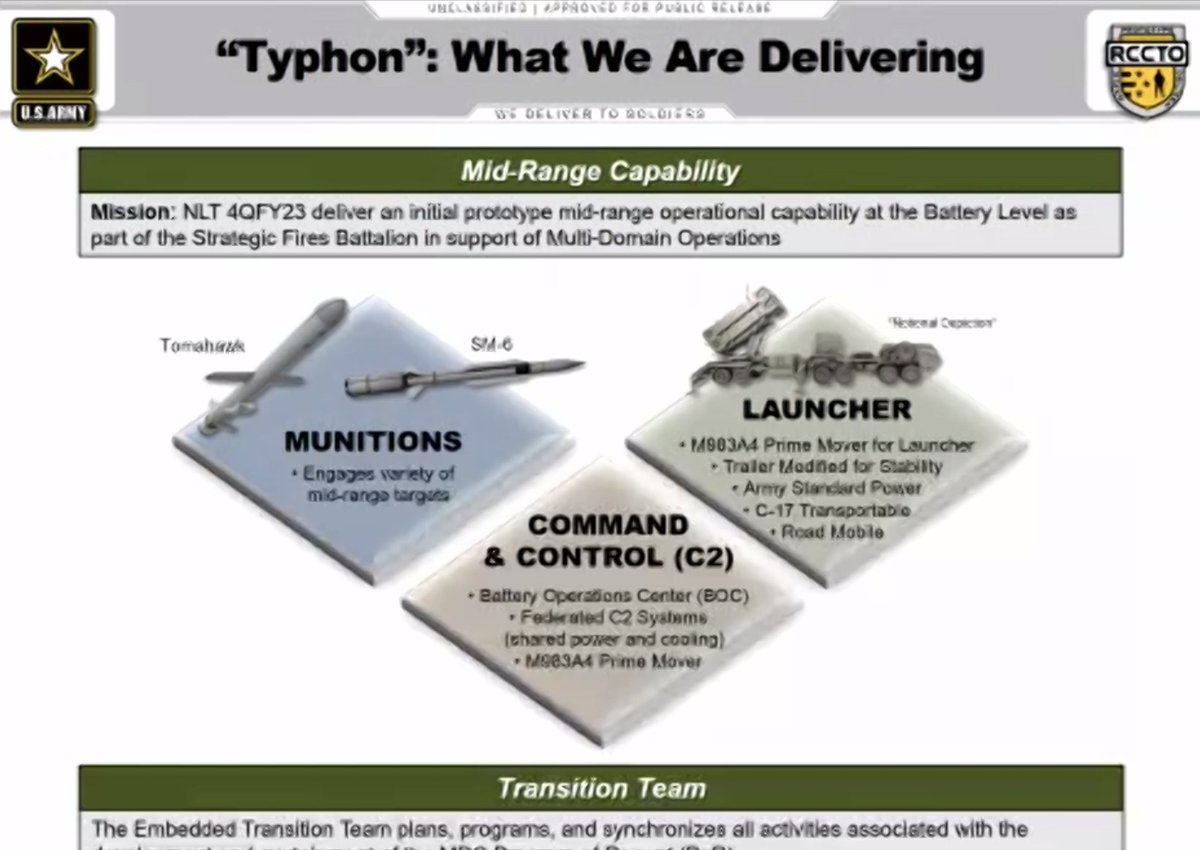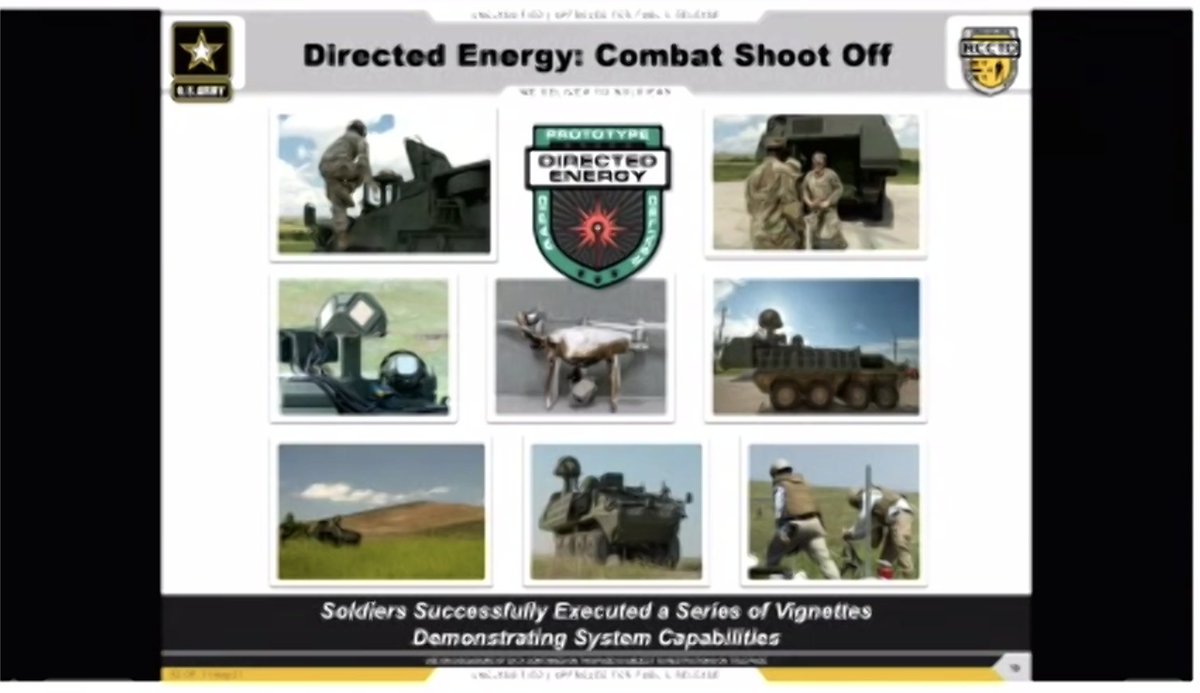#SMD2021 the Mid-Range Capability will involve multirole launcher that can fire Tomahawk or SM-6. "We actually have a missile on the rail that can do offensive or defensive fires simultaneously." 

Slide on 2-prong high-end DE solution. IFPC to have a kinetic and nonkinetic element, which will feature the mobile 300kW HEL and fixed HPM. 

Thurgood brought pencils to the podium to underscore bottom line: "Pencils down." RCCTO is "not interested in being late." 

"When I started this job, I had as much hair as Ronny did. And now I look like General Myles."
Thurgood: Each Mid-Range Capability launcher can hold 4 missiles, and "It can also hold a Patriot right out of the factory, it can hold a PrSM...The Mark 41 launcher that we got from the Navy is really a versatile launcher."
Keeping track of Army's popular names presented at #SMD2021.
LRHW: "Dark Eagle"
MRC: "Typhon"
IFPC-HEL: "Valkyrie"
IFPC-HPM: "Thor"
Relevant reading from @tomkarako:
LRHW: "Dark Eagle"
MRC: "Typhon"
IFPC-HEL: "Valkyrie"
IFPC-HPM: "Thor"
Relevant reading from @tomkarako:

• • •
Missing some Tweet in this thread? You can try to
force a refresh






























